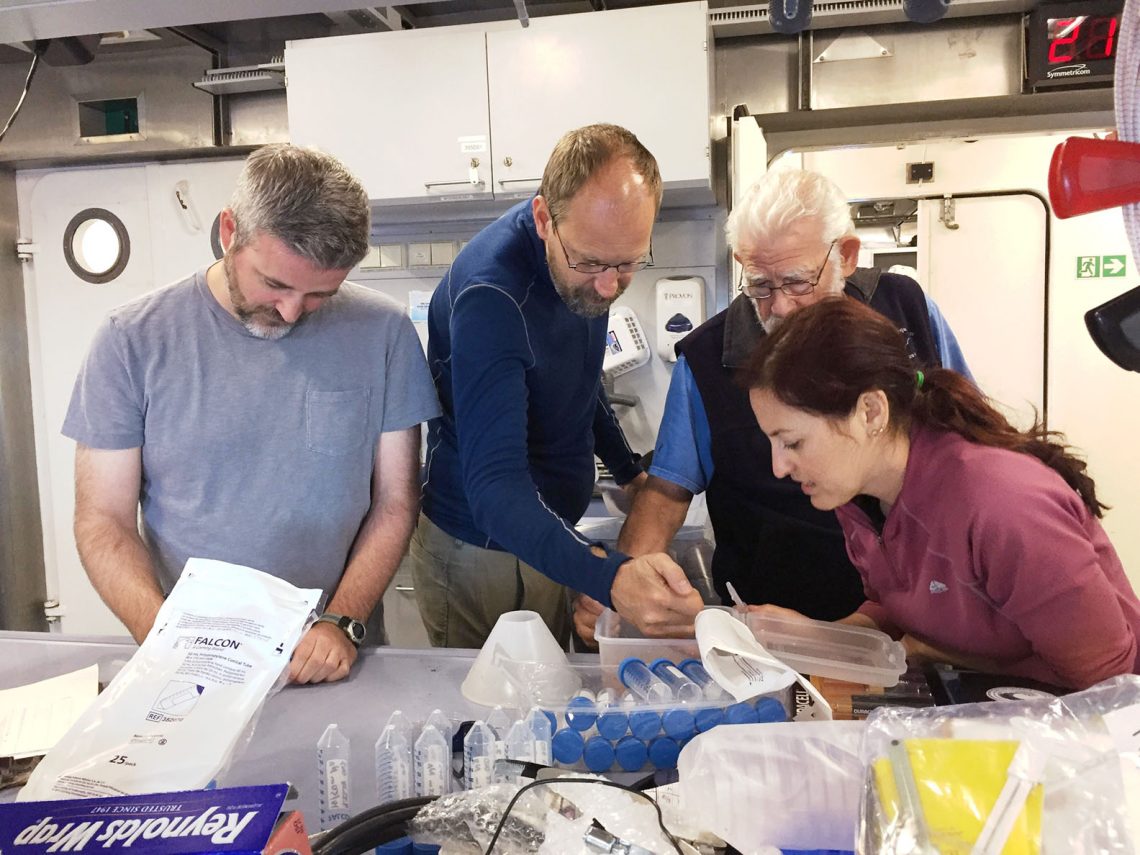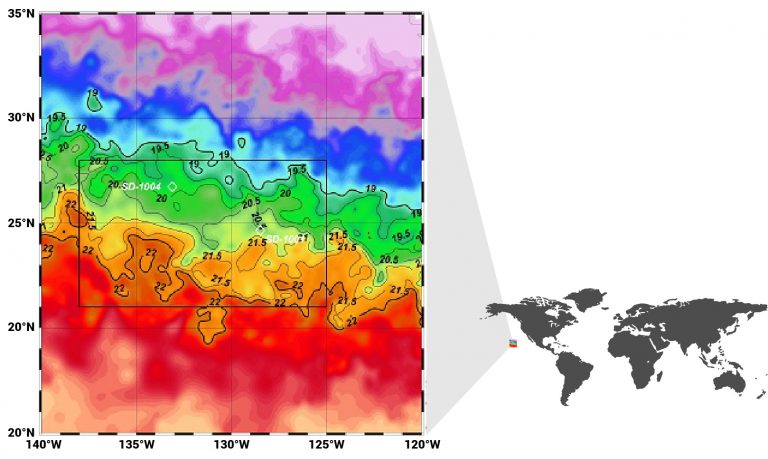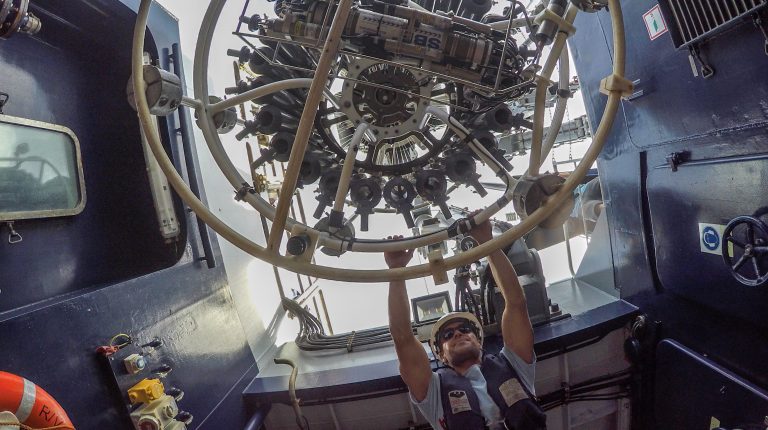It has taken Principal Investigator Dr. Barbara Block and her team three years to plan this voyage; she has been thinking about it for more than a decade. Now over a thousand nautical miles away from her hometown in Monterey, California, she ventures into an Oceanic Wild West seeking to deepen her understanding of white sharks’ open ocean life history and enable policy-makers to protect them.
Any part of the ocean more than two hundred miles from a coast and beyond national jurisdiction constitutes the “high seas.” The high seas account for more than half of the ocean’s surface, and are thought to generate nearly half the global ocean’s productivity. They belong to everyone, which could also imply they belong to no one. As a global commons, it is every nation’s responsibility to safeguard them, yet they are only lightly governed by international law. “In the high seas there are very few rules – it is almost the wild west,” explains Dr Block. “If we are going to save white sharks and other iconic animals for the next generations, we have to start thinking about where the boundaries should be, where the protection should be.”

Into the Desert
The White Shark Voyage will take place in the Abyssal Plain, an underwater plain on the deep ocean floor, usually found at depths between three and six thousand meters. Without the influence of geological features and far away from the influx of coastal nutrients, life is very scarce, which is why scientists refer to it as a “desert.”
It might seem strange traveling to a food-limited environment to study the lives of massive apex predators such as white sharks, but it was the sharks themselves who led the way. “We only know about this region because the sharks took us there. The White Shark Café is an incredible story,” shares Dr. Block. “We have been studying sharks for over 20 years with bio-logging technology tags we attached to the white sharks. These have taken us from North America’s Western shores to a place halfway between Hawaii and North America.”

To Dr. Block, this should show us how how little we know about our planet, “that we can place a bio-logging tag – also called Pop–up satellite archival tags (PATS) – on a white shark, follow that shark beneath the sea and identify a place where more than forty-two white sharks have taken us.”
The scientists discovered that this oceanic desert (an area roughly the size of New Mexico) is actually a gathering place for white sharks, particularly male ones. Amazingly, the sharks stay in the Shark Café for up to six months per year. Dr. Block aims to understand why the sharks are gathering here: “We hope to find what links the the lit part of the oceans – where the predators are at the surface – to the deeper parts, where the ocean is teeming with life. We call this the mesopelagic zone. We want to understand how the predator is using the region: as as a place to either forage or to potentially search for mates.”
The Tip of the Arrow
As apex predators, sharks play a fundamental role by maintaining the species below them in the food chain while serving as an indicator for ocean health. They help remove the weak and the sick, keeping a balance between competitors and helping to ensure species diversity. Their eco-systemic services have an impact in the world’s food security, climate, and economies.
In order to ensure the ocean’s health, we must pay close attention at its apex predators. The white shark is – without a doubt – one of the most iconic and mysterious. Over the course of the next month, the team onboard Falkor will take researchers one step closer to understanding these magnificent animals.


